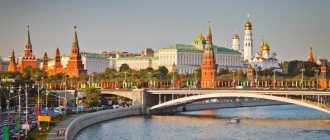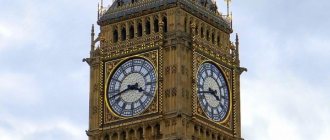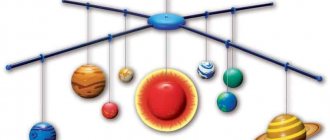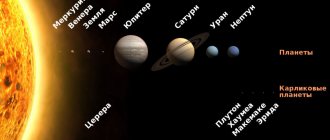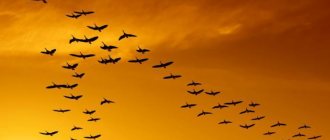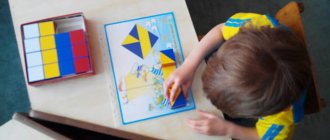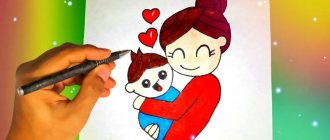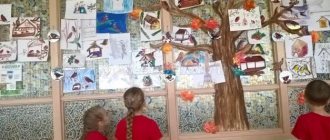General facts about birds
Scientists from Harvard University during a large-scale study found that birds are close relatives of dinosaurs. Scientists believe that the ability to fly helped them survive during the extinction of other lizards. Next, we will tell you about interesting facts about birds for children.
Bird bones are hollow inside and filled with air. A unique biological feature lightens the bird's body weight, so they are able to fly. The jaws of birds do not have teeth, but they have two larynxes, with the help of which they are able to produce pleasant melodic sounds. Birds are able to sing from birth - this is how they communicate with each other, warn each other about danger and protect their territory. It is known that the body temperature of birds is several degrees higher than that of humans.
There are currently almost 11,000 different species of birds known. We will talk about some interesting facts for children from the life of birds in the following chapters of our article.
How do birds live in winter?
How do birds cope with frost in winter? It turns out that they are preparing for winter just like people! How do people prepare for winter? (They change into winter clothes and insulate their homes.) Who else dresses in warm winter coats in winter? (Animals - hares, foxes, wolves) And birds, too, by winter change their plumage to a warmer, thicker and longer winter plumage. Birds have air between their feathers. It keeps the cold out and retains the heat. So they don't freeze!
Hummingbird
The smallest bird species in the world is the Bee Hummingbird. The length of its body does not exceed 6 cm, the baby weighs only 2 grams. Their habitat is the island of Cuba. Now we will tell you in more detail about interesting facts for children about birds of this species.
The biological structure of the hummingbird's body is very interesting. For example, they are known to have a forked tongue, which helps these miniature birds feast on nectar. The cardiac muscle of hummingbirds occupies almost half the length of their body, as when flying they reach speeds of up to 79 km/h, and the frequency of wing beats is usually 50-80 per second.
Some features of the flight of these miniature birds are noteworthy. For example, these are the only birds that can hover in the air and fly backwards. Such maneuvers require considerable energy expenditure, so by the end of the day, hummingbirds eat a volume of food that exceeds their own weight.
Hummingbirds are stunningly beautiful birds. They are distinguished by their iridescent plumage, often with a metallic sheen. There are special places in Cuba where tourists can feed hummingbirds and admire these beautiful creatures of nature.
Lesson summary for the senior group on the topic: Birds
Lesson notes. Topic: “Let's talk about birds”
The summary is intended for preschool teachers.
Objectives of the lesson: • deepen and expand children's knowledge about birds; • explain the reason for bird migration; • learn to distinguish birds from other animals; • enrich and activate children's speech; • Cultivate a kind, caring attitude towards feathered friends, a desire to help birds during a difficult period for them. Preliminary work: • bird watching on a walk;
• looking at illustrations with birds; • learning the outdoor game “Birder Catcher”; • asking riddles • reading fiction about birds. Progress of the lesson:
- Guys, guess who we will talk about today in class.
Riddle: “We differ in color, you will meet us in winter and summer. If we flap our wings, we will be in the blue sky. We can chirp, croak, sing and coo. You will feed us in winter. Children, who are we? name it." (birds) - What birds do you know? (children take turns naming one bird at a time) - Well done, you know a lot of birds. This means that it will not be difficult for you to guess my riddles. 1. How would a crown suit me? — The Crow croaked importantly 2. Who, without notes and without a pipe, is the best at trilling, more vocal, more tender? Who is this? (Nightingale) 3. If it wants, it will fly straight, If it wants, it hangs in the air, it falls like a stone from the heights, and in the fields it sings and sings. (Lark) 4. It flies all night - it gets mice. And it becomes light - Sleep flies into the hollow. (Owl). 5. If I knock, my head hurts, but if I don’t knock, I’m hungry. (Woodpecker). 6. Lives in the forest, Howls like a robber, People are afraid of him, And he is afraid of people. (Owl). 7. He knocks all the time, he hammers trees, but he doesn’t cripple them, he only heals them. (Woodpecker) 8. A spotted bird laid an egg in someone else’s nest. (Cuckoo). 9. In the summer they follow the plowman, but in the winter they leave screaming. (Rooks). 10. Stands on one leg, looks intently into the water. Poking at random with its beak - Looking for frogs in the river. A drop hung on my nose. Do you recognize? This is... (Heron). 11. And he doesn’t sing, And he doesn’t fly, Why then do they consider Him a bird? (Ostrich). 12. Who, without notes and without a pipe, plays trills best, more vocally, more tenderly? Who is this?.. (Nightingale). 13. The motley fidget, the long-tailed bird, the talkative bird, the most talkative. (Magpie) - What will happen if we don’t have birds? (children’s answers) - What can we do to prevent birds from disappearing? How can we help them? (build birdhouses, make feeders, etc.) So that flowering gardens do not die in vain from harmful insects. Always, at any time of the year. Take care of all kinds of birds, friends. — With the onset of cold weather in the fall, the migration of birds begins, this is how it is written in E. Blaginina’s poem: Soon white snowstorms will raise the snow from the ground. The cranes are flying away, flying away, flying away. You can’t hear the cuckoo in the grove, And the birdhouse is empty, The stork flaps its wings - It flies away, it flies away. A patterned leaf sways in a blue puddle on the water. A black rook and a black rook are walking in the garden, along the ridge. The rare rays of the sun, crumbling and turning yellow, The rooks are flying away, flying away, flying away. — Guys, what birds is this poem about? (about migratory birds) - The first to fly away from us are the fast-winged birds. These are swifts, swallows, starlings, larks. They fly away at the end of August, because... many insects disappear. These birds feed on insects and are called insectivores. — On the golden autumn days, the cranes gathered to fly away. They circled over their native swamp, gathered in schools, and headed to distant warm countries. The strongest one flies ahead - the leader. Wild geese and ducks fly away later than everyone else - when rivers and lakes freeze. These birds are called waterfowl. - Let's try to fly like the birds Fizminutka. The little birds were flying. How they flew All the people looked. As they sat down, all the people were amazed. They sat down, sat, soared, flew, and sang songs. - When will the birds return? (spring) - Let's play the game “The birds have flown!” and find out what birds will fly to us in the spring. I will read a poem, and you listen carefully and if you hear a word that does not name a bird, then you need to clap your hands. Birds have arrived: Pigeons, tits, Flies and swifts... (children clap, flies) And who are the flies? (insects) Birds arrived: Pigeons, tits. Storks, crows, Jackdaws, pasta! (children clap, pasta) Birds have arrived: Pigeons, tits, lapwings, siskins, jays and grass snakes. (children clap, snakes) Birds have arrived: Pigeons, tits, Seagulls, pelicans, Mikes and eagles. Pigeons, tits, herons, nightingales, perches and sparrows. (children clap, perches - fish) Birds have flown in: Pigeons, tits, Ducks, geese, owls, swallows, cows. (children clap, the cow is a beast) Birds have flown in: Pigeons, tits, lapwings, siskins, jackdaws and swifts Mosquitoes, cuckoos ... (children clap, mosquitoes are insects) Birds have arrived: Pigeons, tits, Jackdaws and swifts, Lapwings, siskins, Storks, cuckoos, Swans, starlings... Well done to all of you! — A bird is a beautiful creation of nature. Many songs, poems, legends, and fairy tales are written about birds. — Guys, what fairy tales do you know where birds are found? (children’s answers, the teacher adds) — I suggest playing the outdoor game “Birder Catcher.” The players choose the names of the birds whose calls they can imitate. They stand in a circle, in the center of which is a blindfolded birdcatcher. The birds walk, circle around the bird-catcher and say: In the forest, in the little wood, On the green oak tree, The birds sing merrily. Oh! The bird catcher is coming! The bird catcher claps his hands, the players stop in place, and the driver begins to look for birds. The one he finds imitates the call of the bird he has chosen. The birder guesses the name of the bird and the name of the player. The player becomes a bird catcher. Players should not hide behind objects encountered along the way. Players must stop in place exactly when signaled. “Not all birds fly away; there are those that stay with us for the winter. What are their names? (wintering, sedentary) -What wintering birds do you know? (they will list the wintering birds of our region). — Why do they say that winter is a difficult time for birds? (children's answers) - How can you take care of them in winter? (children's answers) - What can be used as food for birds in winter? (children's answers) - Indeed, winter is a difficult time for birds, especially if it is frosty and full of snow. Birds cannot find food under the snow. A hungry bird suffers greatly from the cold. Winter days are short, and in order to survive without freezing, you need to eat much more food than in summer. You need to support the birds, make feeders for them and don’t forget to bring food to them. This is a very useful thing. Relaxation. - The birds have flown. They are flying, flapping their wings (children raise their hands up and down) - The wind has risen, it is becoming more and more difficult for the birds to fly! - The rain wet the wings, the wings became heavy (children slowly raise their hands) - It’s very difficult for the birds. “But our birds are stronger than the mighty wind, stronger than the cold rain.” — The wind died down, it gave up. The sun came out. Tired birds fall to the ground. The flock settles down to rest (the children lie on their stomachs, arms to the sides) - Our birds are so tired that they can’t move! — Our birds have warmed up. The feathers have dried up. — The wings are resting. The sun warmed the wings, they became warm. - Legs are resting. The sun warmed my legs and my legs became warm. - The backs are resting. And the backs warmed up, became warm. - The heads warmed up, and they became warm. “It’s so good for our birds to rest.” - Thank you, you did a good job today. Some of the kids with their parents and you and I also made feeders. And now we will go outside together and hang them on a tree, and you promise that every day you will take out food and observe what birds fly to your feeders.
We recommend watching:
Summary of educational activities in the senior group “Journey to a Fairy Tale” Summary of a mathematics lesson for children of the senior orthopedic group Summary of educational and gaming activities in the senior group in the section of the “Childhood” program Synopsis of educational activities for the perception of music in the senior group of kindergarten
Similar articles:
Lesson in the senior group of kindergarten on the topic of February 23
Lesson notes for children of senior preschool age. Topic: Invisible air
Summary of organized educational activities for children of the senior group
Notes for mathematics classes in the senior group
Lesson summary on the topic “Reserve” in the senior group
African ostrich
The largest bird species in the world is the African ostrich. Due to the peculiarities of its biological structure, the ostrich is not capable of flying, but adult individuals are capable of running at speeds of up to 70 km/h. The size of these birds is amazing: height reaches 280 cm, and body weight - 120 kg.
The habitat of ostriches covers almost all of Africa. They feed mainly on plant foods. Ostriches lead a sedentary lifestyle and are found in small groups, which usually include one male and several females.
Thanks to their excellent vision, ostriches survey the territory and try to leave it before predators appear.
The male takes full care of the offspring. After the females have laid their eggs in a special hole, which he previously dug in the ground, the male begins to hatch them. When the offspring hatch, the model parent protects it from predators and hides it under its wings, protecting it from the sun.
Kiwi
The kiwi bird is the only bird species in the whole world that does not have wings, and their feathers look more like wool. New Zealand is the habitat of amazing birds. Next, we will tell you about interesting facts for children about birds - kiwi.
Kiwi is active at night, but during the day it prefers to hide in a hole. Birds of this species always have several shelters, which change from day to day. Kiwis feed on berries, insects and small crustaceans. This bird species is monogamous. After creating a pair, the female lays an egg, which is incubated by the male. Parents do not care about their offspring and leave the nest after the chick hatches.
The following chapters of the article are devoted to interesting facts about wintering birds for children.
Wintering birds
The formation of an ecological culture begins with the cultivation of a caring attitude towards nature and the animals that inhabit it.
Wintering birds especially need human support at this time of year. Preschoolers need to be introduced to birds, and then told and shown how to help them survive the winter. Goals
: to form an ecological culture in children, instill a love for birds and cultivate a caring attitude towards them.
Tasks
:
Developmental
:
- Develop skills in conscious and appropriate use of words in accordance with the context of the statement.
Improve dialogic speech.
Educational
:
- Cultivate a friendly attitude towards birds.
- Create a desire to protect them and help wintering birds.
Educational
:
- Clarify and expand children's knowledge about wintering birds.
- Develop bird watching skills and abilities.
Materials
: pictures and photographs of wintering birds, audio recordings of birds singing, feeder, bird food.
Progress of the lesson
Educator
. Guys, today we will get acquainted with wintering birds. We will read poems about wintering birds, listen to their voices, find out what they eat and how they live. But first we will go to the bird exhibition. Our bird guys will be the guides.
First child
. (
Comes forward, holds a picture of a tit in his hands and reads a poem
.)
Let the snow sparkle all around And the winter wind gets angry - The painted tit sings without getting tired. ( A picture of a tit is placed on the exhibition board
.)
Educator
.
Listen to how the titmouse sings. ( Children listen to the audio recording
.) The tit is a small bird with a yellow belly and a black cap on its head. These are very nimble and lively birds. Tits do not fly away to warmer regions for the winter, but survive the winter by hiding in a hollow. In search of food, they fly to human habitation.
Second child
. (
Comes forward, holds a picture of a bullfinch in his hands and reads a poem
.)
The dawn paints the chest of the bullfinch with a scarlet brush, So that in frosts and snowstorms it does not freeze in the snow. ( A picture of a bullfinch is placed on the exhibition board. Then the children listen to the bullfinch sing
.)
Educator
. The bullfinch is the most winter bird. When snow falls, the bullfinch becomes very visible everywhere, thanks to its red breast. Bullfinches hang on to rowan trees, maples, and viburnum bushes, picking off berries and pecking at seeds.
Third child
. (
Comes forward, holds a picture of a magpie in his hands and reads a poem
.)
She does not sit still, she spreads news on her tail. Maybe they are of little use. But the magpie is proud of herself. ( A picture of a magpie is placed on the exhibition board. Children listen to how it “cracks”
.)
Educator
. Magpie-white-sided, long-tailed fidget. She is very curious: she will see something shiny - a coin or a piece of glass - and look at it with her round eye. Then he will grab you and drag you into his nest.
Fourth child
. (
Comes forward, holds a picture of a crow in his hands and reads a poem
.)
A person well known to everyone, She is a local screamer. He sees a dark cloud, flies up onto a green spruce and looks, as if from a throne, a crow... ( A picture of a crow is placed on the exhibition board. Children listen to how it caaws
.)
Educator
. The crow is a very important and loud-mouthed bird. Crows are either completely black or black-gray. Crows usually fly in flocks. In every flock of crows, one of the crows always plays the role of a watchman, warning the others
about danger.
Fifth child
. (
Comes forward, holds a picture of a woodpecker in his hands and reads a poem
.)
The woodpecker is the doctor of the forest kingdom, the woodpecker heals without medicine. Treats lindens, maples, spruces, so that they grow and do not get sick. ( A picture of a woodpecker is placed on the exhibition board. Children listen to him knock
.)
Educator
. The woodpecker spends most of its time sitting on a tree trunk and knocking on it with its beak, removing insects. The hollow in the trunk serves as its nest.
Sixth child
. (
Comes forward, holds a picture of a sparrow in his hands and reads a poem
.)
Chick-tweet, chick-tweet! A sparrow jumps along the path, collecting bread crumbs. He wanders around at night, stealing grains! ( A picture of a sparrow is placed on the exhibition board. Children listen to him tweet
.)
Educator
.
Sparrow is cheerful, nimble, small. Sparrows build their nests near people's houses. These are very unpretentious birds. However, like the gullible pigeons, who also stay with us for the winter. How do doves coo? ( Gru-groo
.)
Educator
.
So guys, what birds are in our bird show? ( The teacher shows the bird, and the children name it
.) How can you call these birds in one word?
( Hibernating
.) Now let's play.
The game “Which bird is missing?”
Move
. On the board there are five or six pictures depicting wintering birds. The children close their eyes, and the teacher quietly removes one picture and asks the children when they open their eyes: “Which bird is missing”? Children look and answer.
Educator
.
Winter is a very difficult time of year for birds, especially if it is frosty and snowy. Guys, how can we help birds in winter? ( Make a feeder and feed the birds
.) You know that on our site we hung a feeder and pour food into it. Maybe we will save more than one bird over the winter. And in the summer the birds will help us, they will eat pests and continue to protect gardens and parks.
Educator
. It is also important to know that food from our table is not suitable for birds. Seeds of various plants are suitable for feeding them: hemp, sunflower, melon, watermelon. Sparrows, for example, peck oats and millet; bread crumbs are also suitable for them. Tits, in addition to seeds, love raw unsalted lard or meat. Bullfinches prefer rowan berries, sea buckthorn, barberry, watermelon seeds, and pumpkin seeds. Pigeons love cereals and bread. And only crows are omnivorous birds.
Educator
.
Guys, do you want to feed the birds? Here we have two feeders: bullfinches flew to one, and sparrows to the other. What to feed them? Who will help me? ( Children, if desired, go out and pour the food that the bird prefers onto the feeder
.) Now it’s time to play.
Game "At the Feeding Trough"
Move
. There are pictures of birds on the table, the children walk around, take the bird they like, and sit down in their place. The teacher reads a poem, and the bird that hears about itself “flies” to the feeder - sits on the magnetic board.
We made a feeding trough, We opened a dining room. The tits came to visit us on the first day of the week, and on Tuesday, look, the bullfinches arrived. There were three crows on Wednesday, We didn’t expect them for lunch, And on Thursday there was a flock of greedy sparrows from all over the world. On Friday, in our dining room, the Dove feasted on porridge, and on Saturday, seven forty flew into the pie. On Sunday, on Sunday there was general fun.
Educator
.
So guys, what birds are on our feeder? (Children list.) What can you call them in one word? ( Hibernating
.) (
At the end of the lesson, the children, at the request of the teacher, tell what they liked to do most and what new and interesting things they learned
.)
Yulia Gorbunova, teacher
at MBDOU “Kindergarten No. 1”, Staritsa
Woodpecker
Woodpeckers are distributed almost everywhere. They lead a sedentary lifestyle. Woodpeckers feed on insects and their larvae, which they get from under the bark of trees. Next, we will tell you in more detail about interesting facts for children about birds of this species.
The speed of a woodpecker's beak strikes reaches 25 times per second. The biological structure of the bird is completely adapted for this lifestyle. It is worth noting that, when obtaining food, woodpeckers deliberately choose diseased trees due to their excellent hearing.
During the cold season, birds feed on nuts, seeds and acorns. Sometimes, in search of food, they move from forest areas closer to people’s homes.
Male woodpeckers choose a tree and prepare a nest where the female will lay eggs that will be incubated by both parents. Woodpecker chicks are born completely helpless, and their parents feed them for 20 days.
Tit
The titmouse is easily recognized by its bright plumage - a bright yellow belly, black head, white cheeks and a long tail. Tits are distributed throughout Europe. Next, we will tell you more about interesting facts for children about birds - tits.
The tit has a rich musical repertoire - scientists have identified several dozen different sound variations.
The female is engaged in the construction and arrangement of the future nest, incubating the offspring. At this time, the male brings her food. After the chicks are born, they are fed by both parents.
Tits feed on insects, seeds and fruits. These birds are very useful because their main function is to destroy forest pests.
The fact that it is very difficult for wintering birds to get food in the cold season deserves special mention, so you need to help them: build bird feeders yourself or replenish food supplies in ready-made feeders, which are probably located in the park areas of your city.
MAGAZINE Preschooler.RF
Goal: 1. To form a generalized idea of wintering and migratory birds, to learn to distinguish them according to an essential feature: the ability to satisfy the need for food; deepen the understanding of the reasons for the departure of birds (disappearance of the main food, freezing of reservoirs, land, death of vegetative parts of plants), classify birds into wintering (crow, jackdaw, sparrow, tit) and migratory (swallow, rook, duck, swift, starling) based on the establishment connections between the nature of food and the possibility of obtaining it, enrich the vocabulary by introducing words: food, migratory, wintering; cultivate a love for birds and a desire to help them in winter conditions. 2. Teach children to describe birds by characteristic features and descriptions, to recognize them. 3. Learn to make a fairy bird, decorate it with decorative elements; develop spatial and figurative thinking.Preliminary work: Bird watching on a walk; Reading books by natural history writers (Charushin, Prishvin, Bianki); Examination of color illustrations, albums about birds of the Middle Zone; Didactic game “What kind of bird?”
Equipment: Tables with wintering and migratory birds; Box feeders; Sunflower seeds, millet, pieces of lard; Glasses of water of different temperatures; Landscape sheet, colored blanks of square, rectangular and triangular shapes, colored stripes, colored feathers, pencil, scissors, glue, brush, oilcloth, rag, tray; Audio cassette “Voices of birds”.
Expected result: formed ideas about birds, enrichment of children's vocabulary.
Progress of the lesson: 1. The teacher invites the children to look at tables depicting wintering and migratory birds. Questions: What birds are you familiar with? What birds have you seen on your property or in the forest in winter? (sparrows, jackdaws, crows, tits, pigeons, magpies, woodpeckers). What are the names of the birds that stay with us for the winter? (wintering, sedentary). What birds haven't been seen lately? (swallows, rooks, starlings, ducks, swifts). Where have these birds gone? (Fly away to warmer climes). What are the names of the birds that fly away from us for the winter? (migratory) Why do you think migratory birds fly away? (they are afraid of the cold) Remember what birds eat? (insects hid, so the birds that fed on insects are the first to fly away, then those that eat the fruits and seeds of plants, since the harvest in the gardens and fields is harvested. Ducks and geese fly away later. They live until reservoirs will freeze.
— Migratory birds are not adapted to stock up on food for the winter and obtain it in winter conditions. In the summer they live with us, build nests, and raise chicks. With the onset of cold weather, they fly away to hot countries and return to their native lands in the spring. - Why do you think wintering birds (sparrows, pigeons, tits, jackdaws, magpies, woodpeckers, crows) live with us all year round? These birds are not afraid of frost and manage to get food even in the coldest winters. They look for insects that have hidden in cracks in tree bark, cracks in houses and fences, and eat fruits and seeds of deciduous and coniferous plants. And nuthatches and tits are looking for reserves that they made in the fall. And yet it is very difficult for birds in winter. It is especially difficult to find food during snowfalls, blizzards and severe frosts. In such weather, birds often go hungry and even die from cold and hunger. Birds come closer to people's homes in winter. And you and I must help our feathered friends survive the winter. Seeds of various plants are suitable for feeding birds - hemp, sunflower, melon, pumpkin, watermelon, and many weeds. But only sparrows and buntings peck at oats and millet. Tits are very fond of pieces of unsalted lard.
Today, when you and I go for a walk, we will hang these feeders and put food in them for different birds. And maybe by doing this we will save more than one bird’s life. And in the summer the birds will help people. They will eat insect pests and continue to protect trees in gardens, parks, and public gardens from them.
Physical education lesson The forest and fields are covered with snow, The earth sleeps soundly under the snowdrifts. The birds are looking and looking for something to profit from. For the long winter in our forest, We will prepare food for the birds. Come, birds, you come here to feed!
2. The teacher asks the children to guess what kind of bird it is (children can learn the riddles in advance):
A little boy, in a gray yarmichishka, jumps, darts, collects crumbs. (sparrow)
In a red embroidered hat, in a black caftan, he is famous in the family for his funny forest song. What kind of song is beauty? Knock-knock-knock, yes tra-ta-ta! (woodpecker)
Apples on the branches in winter! Collect them quickly! And suddenly the apples fluttered, After all, these are ... (bullfinches)
There is a palace on a pole, There is a singer in the palace, And his name is ... (starling)
Black, agile, Shouts “krak”, the enemy of worms. (rook)
Who on the tree, on the branch, is counting “kuckoo-ku-ku”? (cuckoo) You can use riddles - descriptions (appearance, what it eats, where it lives...) compiled by children.
3. The teacher shows the children an image of exotic tropical birds, invites them to look at the plumage, and asks how they are similar to a fairy-tale bird. Children cut out the head and torso from square and rectangular blanks. (The body of the bird can be drawn on the back of colored paper and cut out). The wings and tail are made from triangles, making zigzag or wavy cuts along the edge. Place the main parts on the sheet and stick them on. Then children select material to decorate the head, wings and tail. The colored strip is folded like an accordion, and a circle or oval, or a droplet-shaped figure is drawn on the top. They cut it out. Decoration elements can be of different sizes, colors, shapes. They can be glued on top of each other (a smaller element in the middle of a larger one). Children stick figured decorations on the wings, tail, head, thereby conveying the image of a fairy-tale bird. Result: Children, look at what different exotic birds we got. Each one is different from each other. Well done, thank you!
| Next > |

